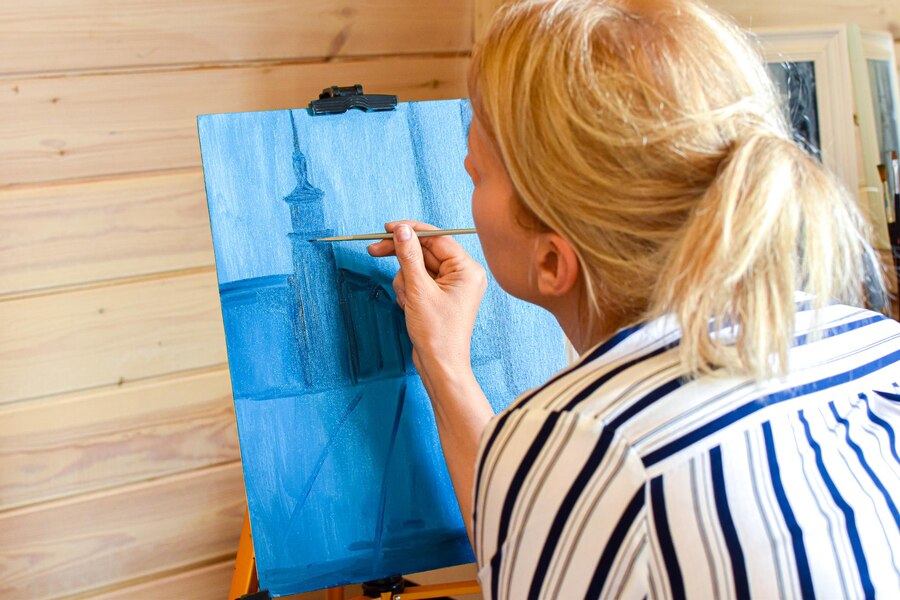
When it comes to watercolor painting, choosing the right paper is just as important as selecting the right paints and brushes. The paper’s texture, weight, and composition can significantly impact the final artwork. Beginners often overlook this crucial aspect, leading to unsatisfactory results. In this comprehensive guide, we’ll explore various types of watercolor paper, their characteristics, and how to select the perfect one for your artistic needs.
Understanding Watercolor Paper Types
Watercolor paper is available in different forms, each designed to cater to various artistic styles and preferences. The three primary types include:
- Hot-Pressed Paper: This paper has a smooth surface, making it ideal for detailed paintings and fine lines. It absorbs less water, allowing for more controlled brush strokes. Artists who focus on botanical illustrations, portraiture, or intricate details often prefer hot-pressed paper. Learn more about hot-pressed paper here.
- Cold-Pressed Paper: Also known as NOT (not hot-pressed), this type has a textured surface that holds water well, making it perfect for general watercolor painting. It provides a balance between smoothness and texture, making it the most versatile option for various painting techniques. Read about cold-pressed paper at Blick Art Materials.
- Rough Paper: As the name suggests, rough paper has a highly textured surface, allowing for bold strokes and expressive brushwork. It is well-suited for loose painting styles and dramatic effects. The deep texture enhances granulation, making colors appear richer and more vibrant. Explore rough watercolor papers here.
Choosing the Right Weight of Watercolor Paper
Watercolor papers come in different weights, which determine how much water they can hold without warping. The three standard weights include:
| Paper Weight | Features | Best For |
|---|---|---|
| 90 lb (190 gsm) | Lightweight, warps easily, requires stretching | Sketching, light washes, practice work |
| 140 lb (300 gsm) | Most commonly used, moderate water absorption | General watercolor painting, beginners, professionals |
| 300 lb (640 gsm) | Heavyweight, does not require stretching | Professional artists, heavy washes, wet-on-wet techniques |
For detailed insights on paper weights, visit Strathmore’s official guide.
Importance of Paper Composition: Cotton vs. Cellulose
Watercolor paper is made from either 100% cotton or wood pulp (cellulose). Understanding the differences can help you make the right choice:
- 100% Cotton Paper: Considered the gold standard, cotton fibers provide superior absorbency and durability. They allow the paint to blend beautifully, preventing colors from appearing dull. If you are serious about watercolor painting, investing in cotton paper is a wise choice. Read more about cotton watercolor paper at Legion Paper.
- Cellulose (Wood Pulp) Paper: This is a more budget-friendly option, suitable for beginners or those practicing techniques. However, it does not absorb water as well as cotton paper, often leading to less controlled paint flow. While it can be a great option for casual artwork, it’s not ideal for professional-quality paintings. Find affordable cellulose papers here.
Factors to Consider When Choosing Watercolor Paper
1. Paper Sizing (Internal & External Sizing)
Sizing refers to the treatment applied to watercolor paper to control its absorbency. Papers with internal sizing (added during manufacturing) and external sizing (surface treatment) allow pigments to stay vibrant. Without proper sizing, colors may look washed out. Learn about sizing on watercolor paper.
2. Acid-Free & Archival Quality
If you want your artwork to stand the test of time, opt for acid-free paper. Acid-free papers prevent yellowing and deterioration, ensuring longevity. Museums and galleries require archival-quality paper for professional artwork. Explore acid-free options here.
3. Paper Format: Sheets, Pads, Blocks, or Rolls?
- Sheets: Individual large sheets allow for customization and are ideal for large-scale projects.
- Pads: Convenient for travel and sketching, available in spiral-bound or glued formats.
- Blocks: These are glued on all four sides, preventing warping without the need for stretching.
- Rolls: Suitable for large murals or panoramic paintings. Find different formats at Jerry’s Artarama.
Frequently Asked Questions (FAQs)
Q1: What is the best watercolor paper for beginners?
Beginners should start with 140 lb cold-pressed cotton paper as it offers a balance of absorbency and texture, making it easier to control water flow. Find beginner-friendly papers here.
Q2: Can I use regular paper for watercolor painting?
No, regular paper is too thin and lacks the necessary sizing to hold water and pigment effectively. It will warp and tear when wet. Discover why watercolor paper is essential.
Q3: How do I prevent watercolor paper from buckling?
Use heavier-weight paper (300 lb) or stretch lighter paper by soaking it and securing it to a board before painting. Learn stretching techniques.
Q4: Does the brand of watercolor paper matter?
Yes, high-quality brands like Arches, Fabriano, and Saunders Waterford provide better performance. Compare top brands here.
Conclusion: Finding Your Perfect Watercolor Paper
Choosing the right watercolor paper can dramatically improve your painting experience. Whether you’re a beginner or a professional artist, understanding the differences in texture, weight, and composition is crucial. 100% cotton paper with a weight of at least 140 lb is generally the best option for most artists, offering a balance of absorbency, durability, and workability. Experiment with different brands and formats to find what suits your style. Investing in high-quality paper ensures that your paintings remain vibrant and last for generations.
For further guidance on watercolor techniques and paper recommendations, check out Handprint’s Guide to Watercolor Papers. Happy painting!
